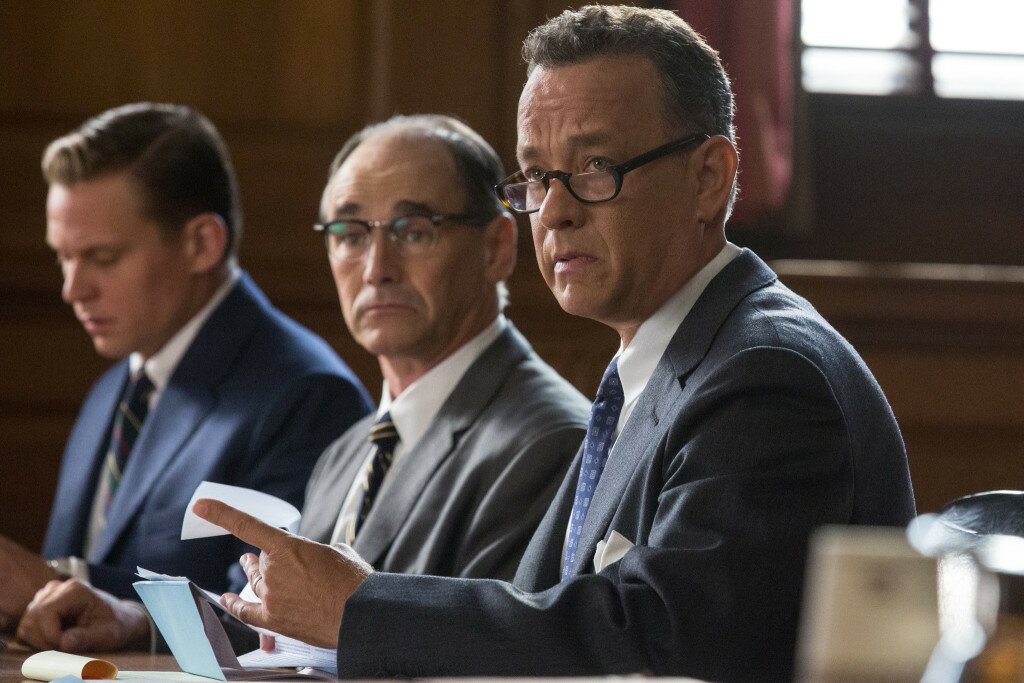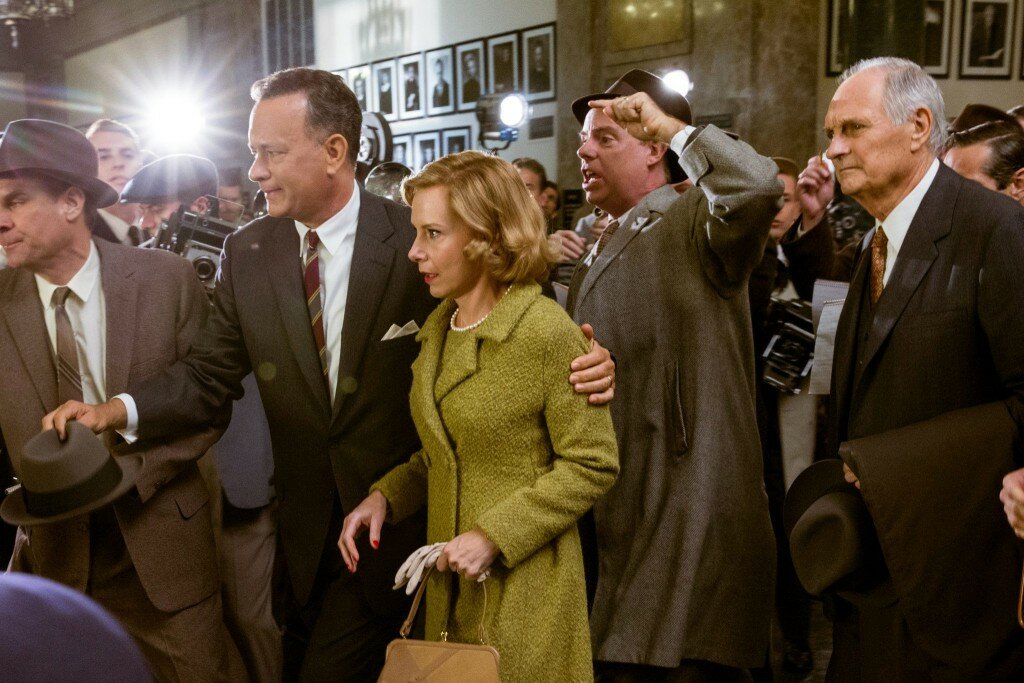Bridge of Spies Review
by: Anthony Zangrillo
James Donovan. Prosecuted nazis during the Nuremberg Trials. Litigated numerous insurance law case for his prestigious firm. Acted as a consummate professional in litigation and negotiation. Private Citizen and Spy. Bridge of Spies unravels the “inspired by true events” story of the insurance lawyer turned international negotiator. Steven Spielberg works his movie magic to share this fascinating and exciting story, dealing with a monumental prisoner exchange, taking place on the brink of World War III.
Tom Hanks dominates the movie through his memorable portrayal of Donovan. Hanks establishes Donovan as a stalwart of legal excellence. His first scene solidifies Donovan’s innate ability to win negotiations through precision and reason. Donovan swiftly maneuvers through the curt slang of an inexperienced attorney to pierce the veil of his inarticulate arguments. This scene tells the audience everything they need to know about Donovan. Moreover, it creates a believable scenario in which other lawyers would undoubtedly respect his talents, choosing him to represent Soviet Spy Rudolf Abel (Mark Rylance). Notably, Spielberg recalls that Ethan and Joel Coen created this fictional scene, based on Donovan’s “bulldog tactics” during the negotiations of insurance lawsuits. Furthermore, Spielberg remains in awe at Hanks’ spectacular ability to “completely step out of himself and exist in the clothing or persona of someone else.” This gift enables the legendary actor to ground Donovan, while elevating him at the same time.
Hanks and Rylance provide the strongest scenes in the film. Unsurprisingly, Hanks always enjoyed working with Rylance, eagerly awaiting their scenes together. Indeed, a devoted lawyer and his disinterested client provide a great premise for these characters. Their conversations establish Abel as a Russian patriot willing to die before becoming a traitor. While deplorable to Americans during the Cold War, the film will make viewers feel sympathy for Abel’s strict adherence to his own integrity.

Brooklyn lawyer James Donovan (Tom Hanks) meets with his client Rudolf Abel (Mark Rylance), a Soviet agent arrested in the U.S. in DreamWorks Pictures/Fox 2000 PIctures’ dramatic thriller BRIDGE OF SPIES, directed by Steven Spielberg.
Donovan devotes every fiber of his being to providing Abel with an exemplary defense. While other lawyers of his acumen would merely go through the motions, Donovan remains committed to proving Abel innocent of treason, due to the fact that Abel was never a U.S. citizen. This decision has dire consequences. At one point, an extremist shoots six bullets into Donovan’s home, nearly hurting one of his daughters. On a side note, Spielberg mentioned that in reality, “it was only one bullet that went through Donovan’s window,” but Spielberg felt six worked better in the movie, as he noted that, “Scorsese would’ve had twenty bullets go through the window.” Through adversity and disparagement, Donovan never surrenders his crusade.
Overall, the performance between Hanks and Rylance radiates off the screen. However, to savor this chemistry, Spielberg made the creative decision to have Abel drop out of the narrative for a long period. Focusing solely on Donovan towards the latter half of the film, audiences will miss Abel’s humdrum presence. By the time he reappears, it will feel like a reunion between two old friends. To establish this strong of a relationship in such a short amount of screen time further exemplifies Spielberg’s immense filmmaking talent.
Shockingly, this movie provides a copious amount of tense, nail-biting sequences. Mid-way through the film, the litigation focused scenes morph into a battle of international negotiation and espionage. Hanks adds a new layer of depth to Donovan. Acting as a rogue agent, Donovan makes risky demands that provide for a compellingly tense finale. Spielberg knows how to build up the stakes of these scenes, creating a dramatic field for Hanks to shine in. Surprisingly, Hanks maintains Donovan’s glib demeanor, continually expressing disdain over a cold he received on the trip to Germany. Hanks and Spielberg recalled the veracity of Donovan’s cold, citing family testimony.
Speaking of conflict, a plane crash comprises one of the major set pieces of the film. In an allegedly true exploit, a U.S. plane is shot out of the sky while taking espionage pictures. To complicate matters, the pilot is ejected, but desperately holds on for dear life to the tube of his oxygen tank. This fantastical sequence provides an unexpected action sequence, which Spielberg executes masterfully.
Alan Alda and Amy Ryan make memorable appearances in the supporting cast, but this is ultimately Hanks’ movie. Every element of the plot builds to a final scene on the Glienicke Bridge. This authentic setting provides a great backdrop for the film’s conclusion. In fact, Spielberg and Hanks recalled the difficulty of the shoot due to the area’s extremely frigid weather. Hanks jokingly noted that, “almost nine actors would squeeze into a tiny guard booth in between takes.” Yet all of this hardship pays significant dividends in the breathtaking finale.
Ultimately, due to his noble actions, Donovan is the lawyer every law student should valorize. Yet Spielberg provides us with an observation from the long lines of “heroes” that he develops for the screen. To Spielberg, “if you approached any of these characters in real life, they would not consider themselves heroes.” This fact embodies our fascination and awe in the humble protagonist. Bridge of Spies is a true masterpiece of classic filmmaking. Spielberg and Hanks have replicated the magic of their past collaborations, and I look forward to their next project.
Score: 9/10
Note: All quotes came from a live Q&A between Steven Spielberg and Tom Hanks and a college conference call with Steven Spielberg











Pingback: Trailer: The Post | The Motion Picture Club